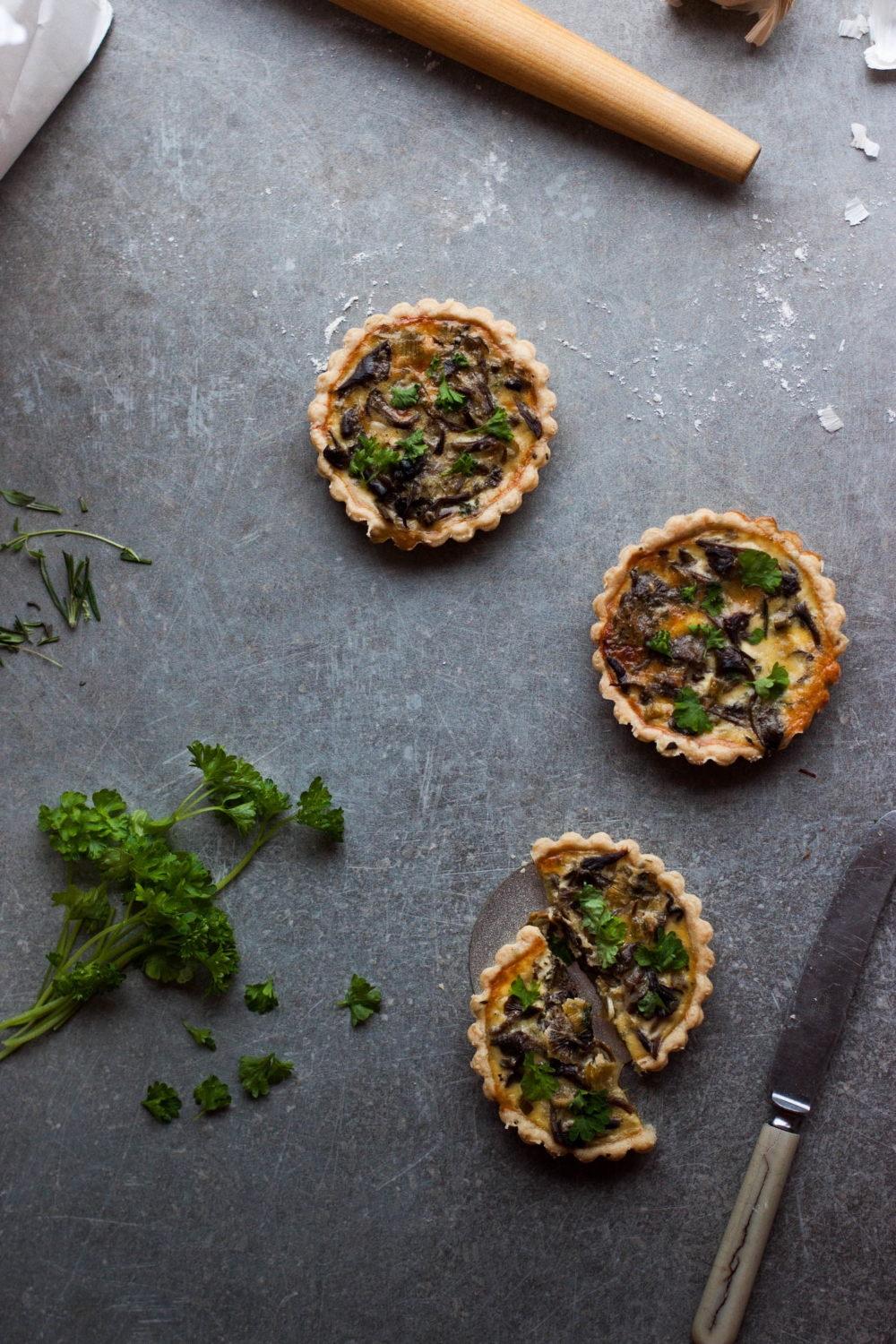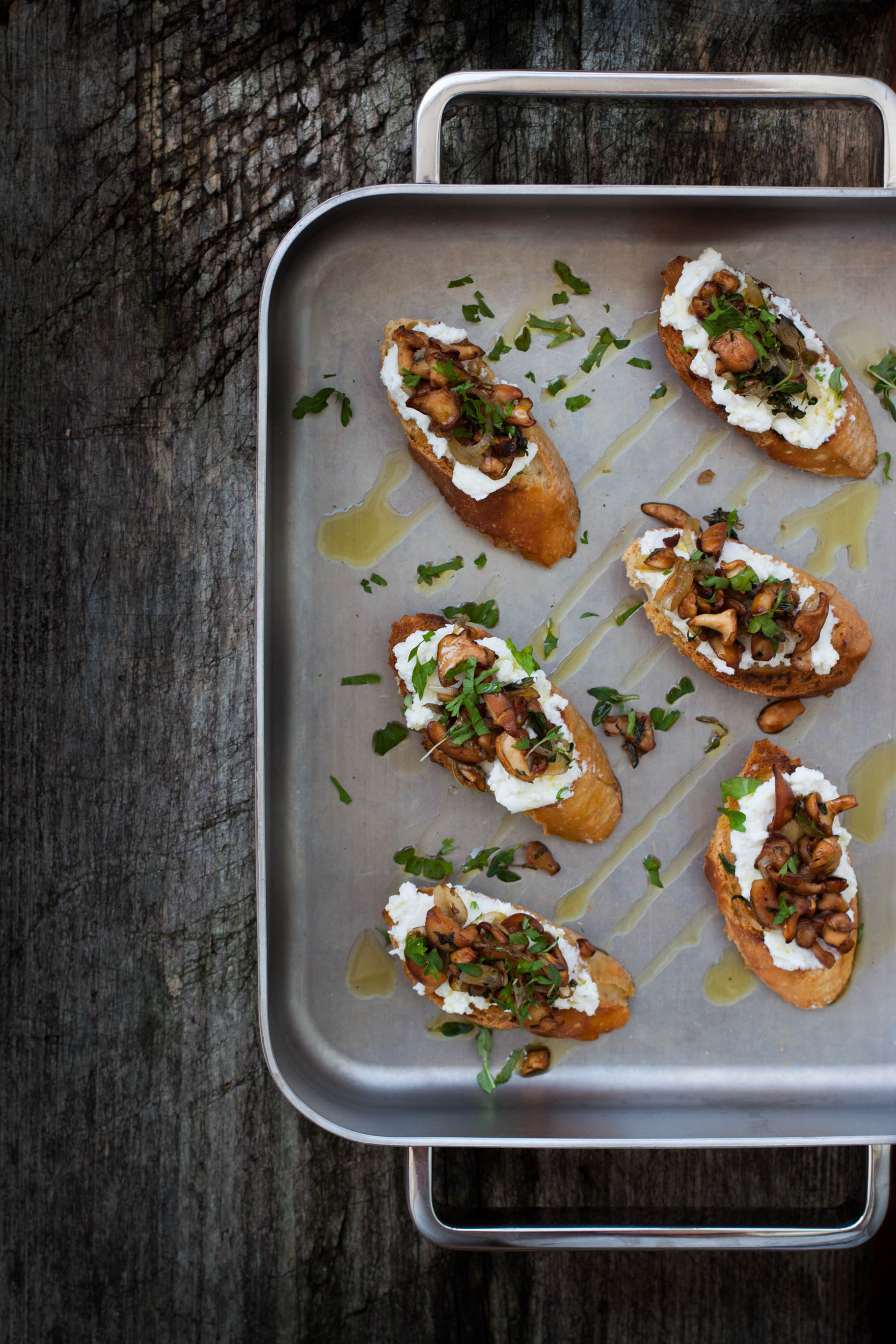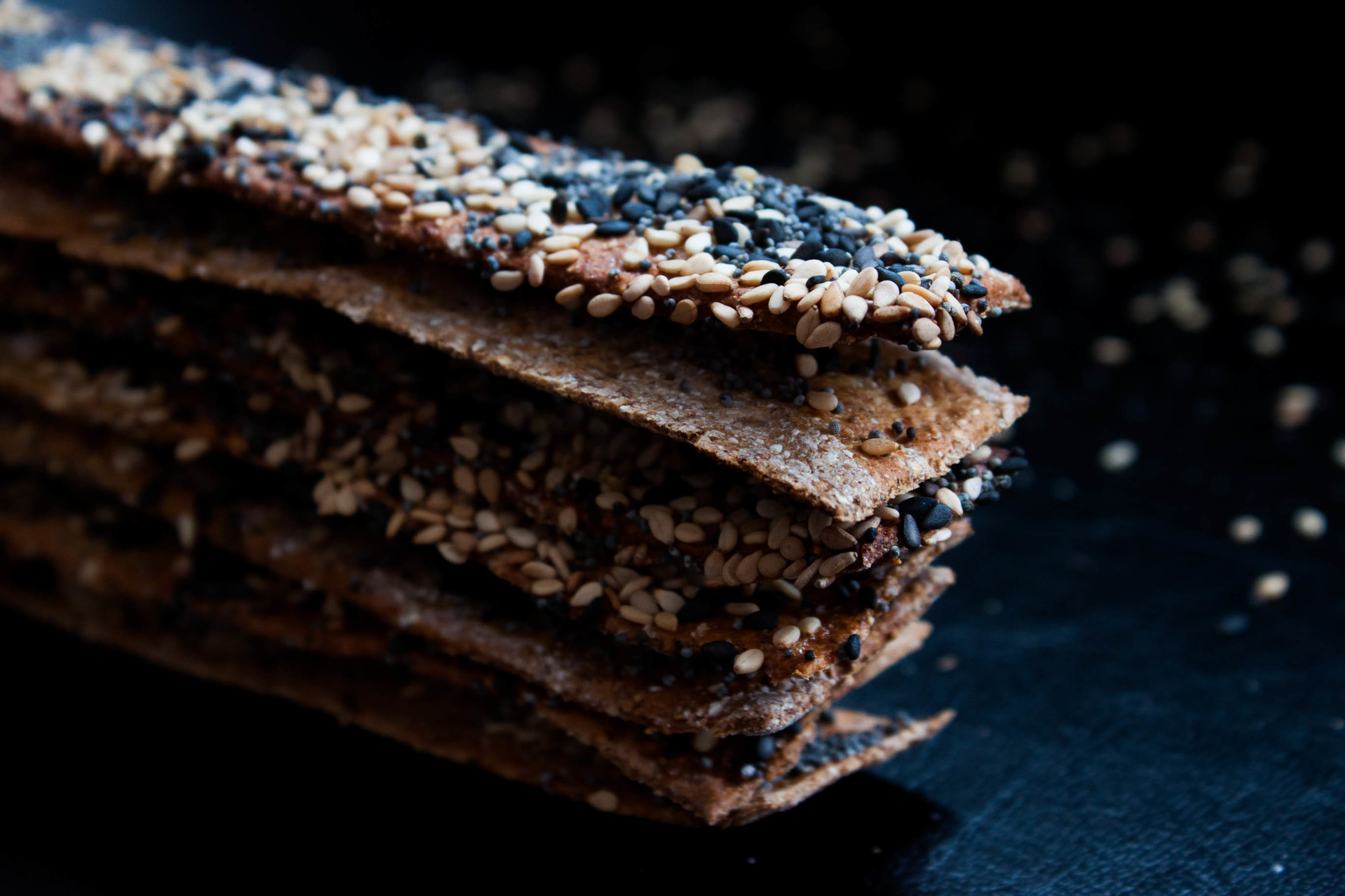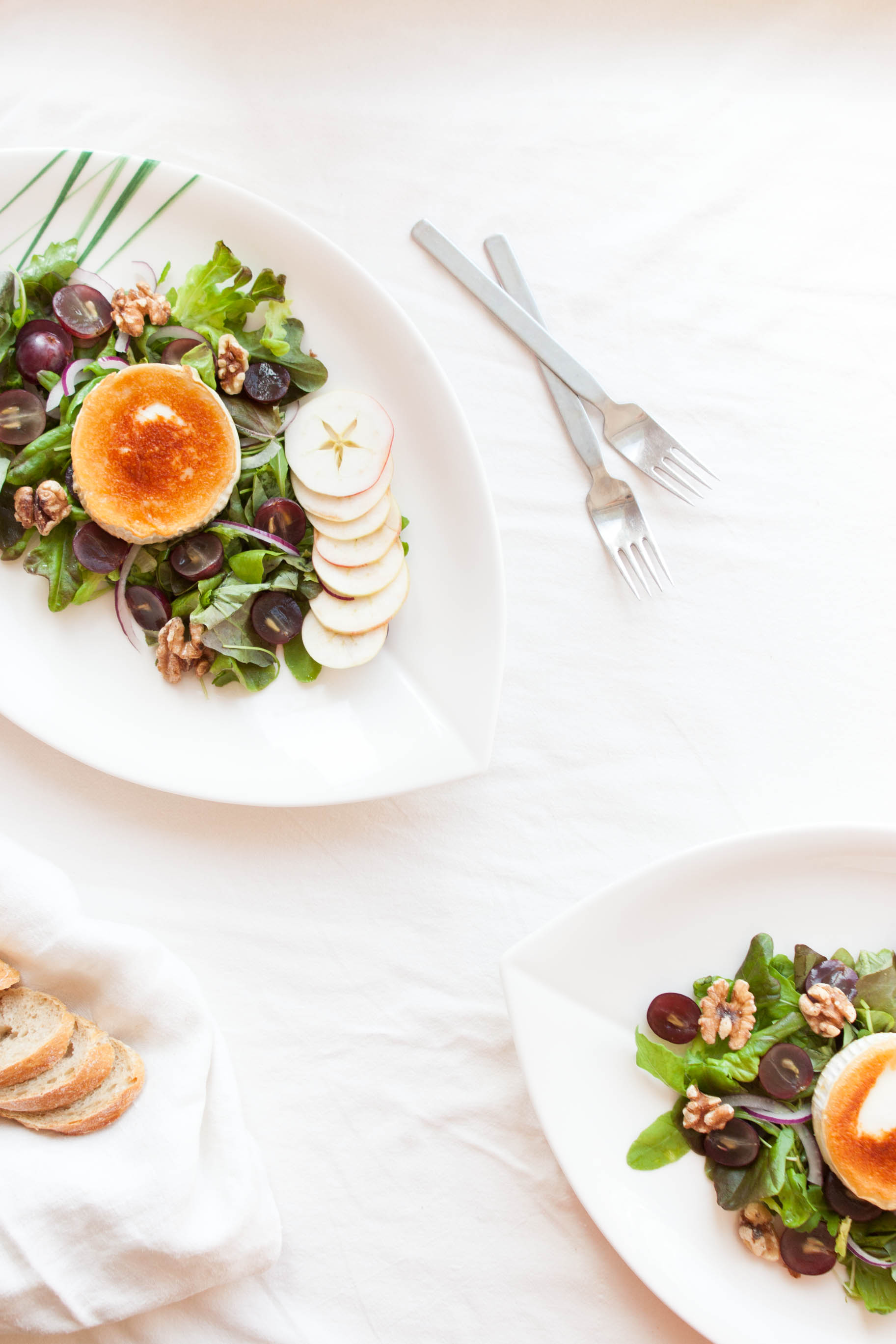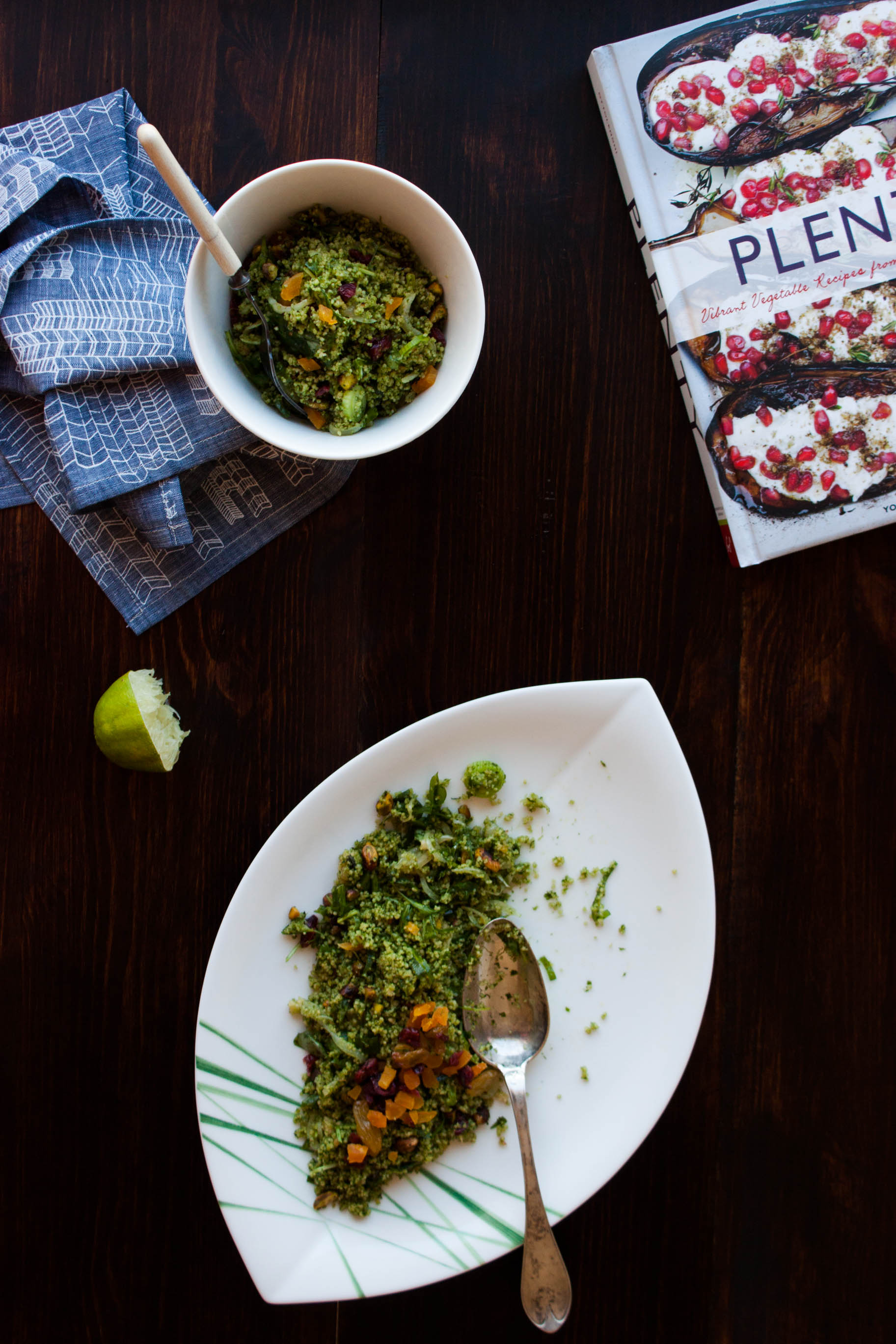Guys, this is probably going to be this season's last mushroom post and recipe. At least when it comes to fresh wild mushrooms... To be honest, I'm already planning to make a risotto with the funnel chanterelles I dehydrated, so I'm not ready to give up on mushrooms for good. I hope you're okay with that.
Last week, I spent a couple of days at out summer cottage enjoying the silence, fresh air, and woods. I knitted (currently working on this project using this wonderful yarn), read (finally finished the heart-breaking The Fault in Our Stars), and sat by the fireplace; watching the burning logs and listening to the crackling fire. The weather was rather nasty: rainy, cold, and windy. Typical fall days one might say. Even stormy. On the first night I actually was terrified of trees falling down on our house which, of course, didn't happen.
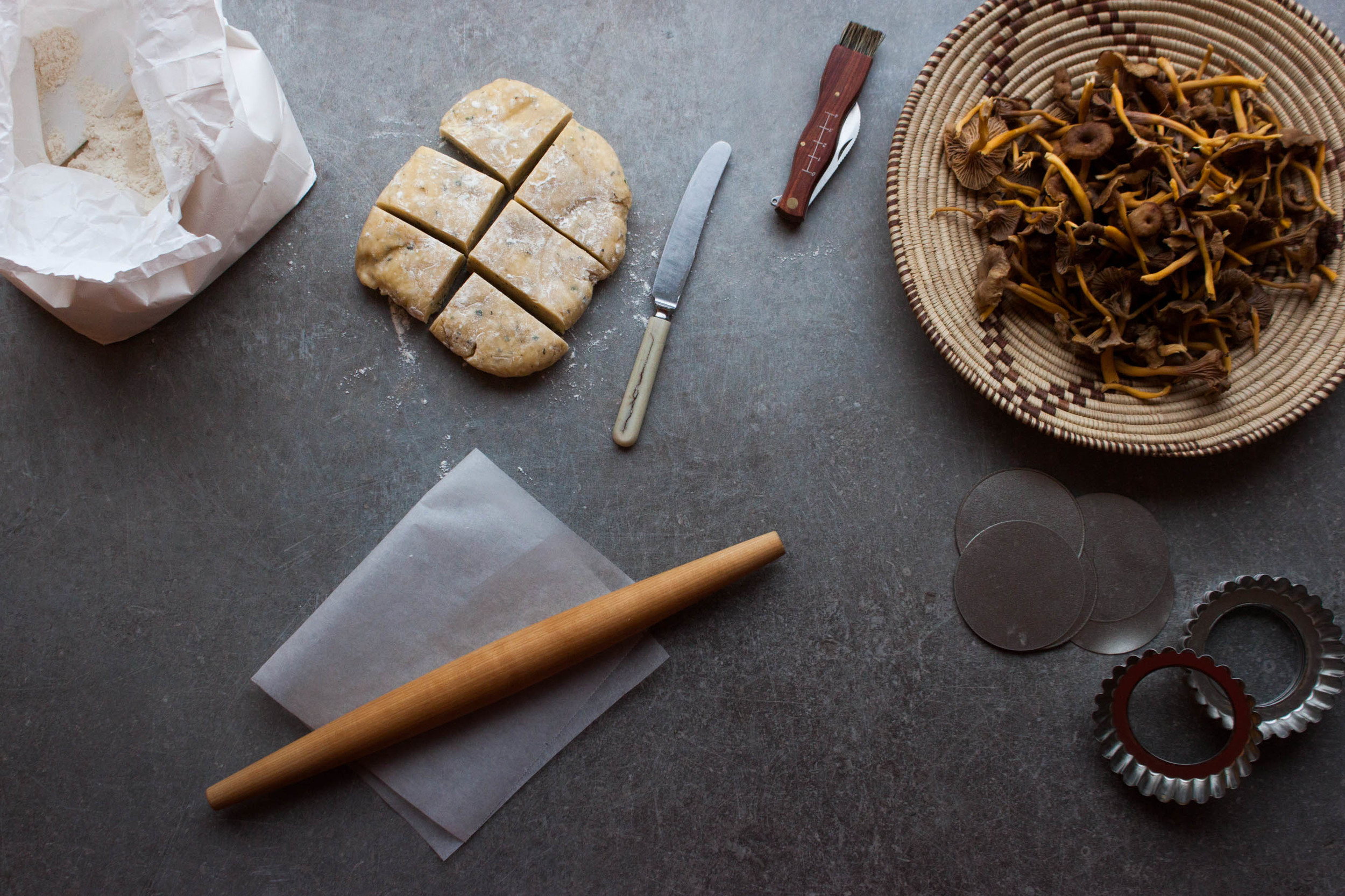
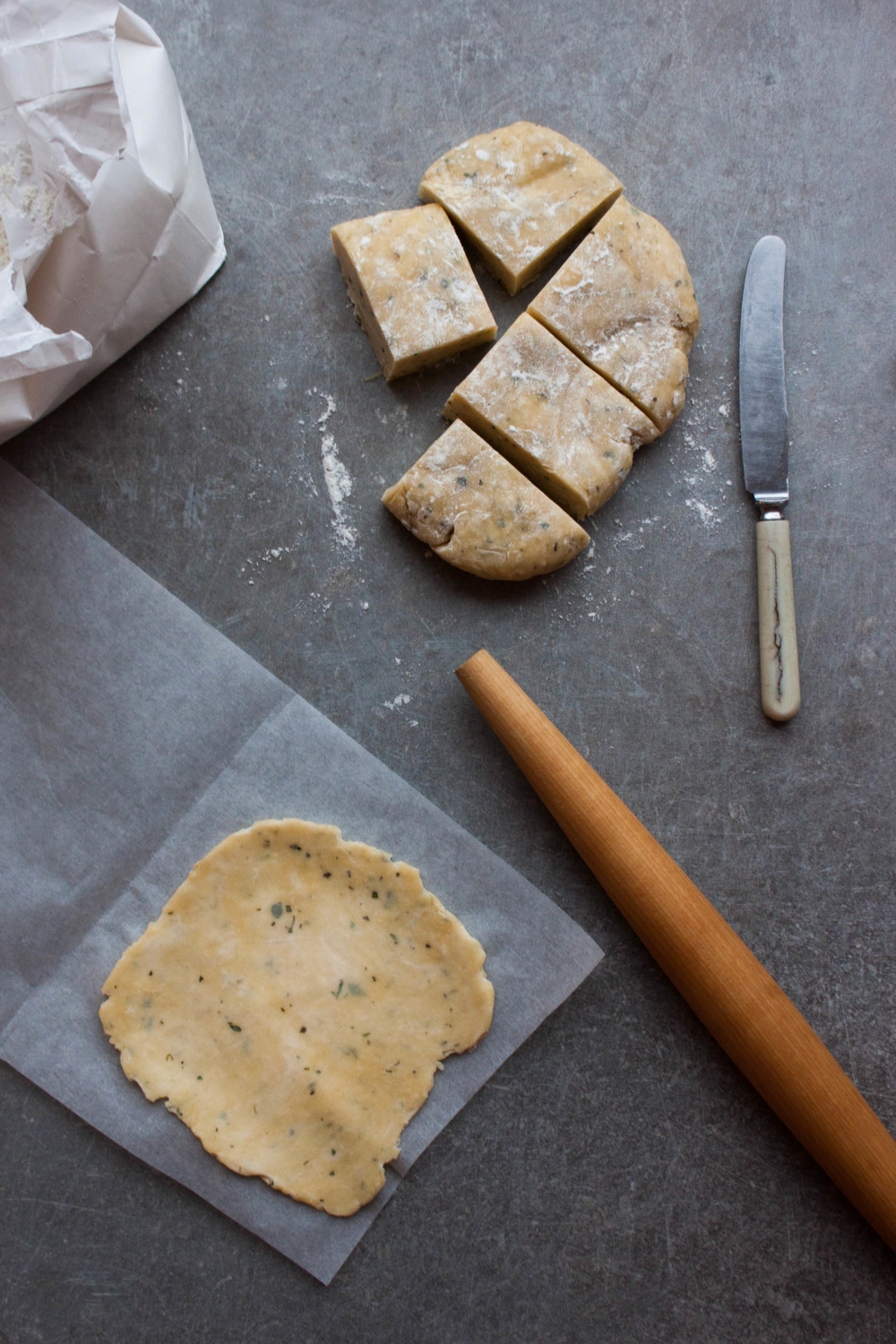

Thursday turned out to be a great day; the rain had stopped and the wind wasn't that fierce anymore. Perfect weather to go mushroom foraging. Most often, I do have a certain mushroom variety in my mind when I head into the woods. This is mostly because different varieties grow in different environments and during different times of the year. To know where and when to look, you have to know what you're looking for. Pretty logic, right?
Funnel chanterelles (Craterellus tubaeformis / yellowfoot) can be found in great numbers here in the Nordic woods until late fall; basically until they get buried under snow so that you're unable to spot them. It's one of my most favorite mushrooms to forage as one often gets rewarded with a phenomenal catch – we came home with around 15 liters / 4 US gallons. Did we spent much time in the woods you might ask. No, a bit more than two hours. That's it. 15 liters of mushrooms for 2 hours wandering in a forest isn't that bad a reward, don't you agree?


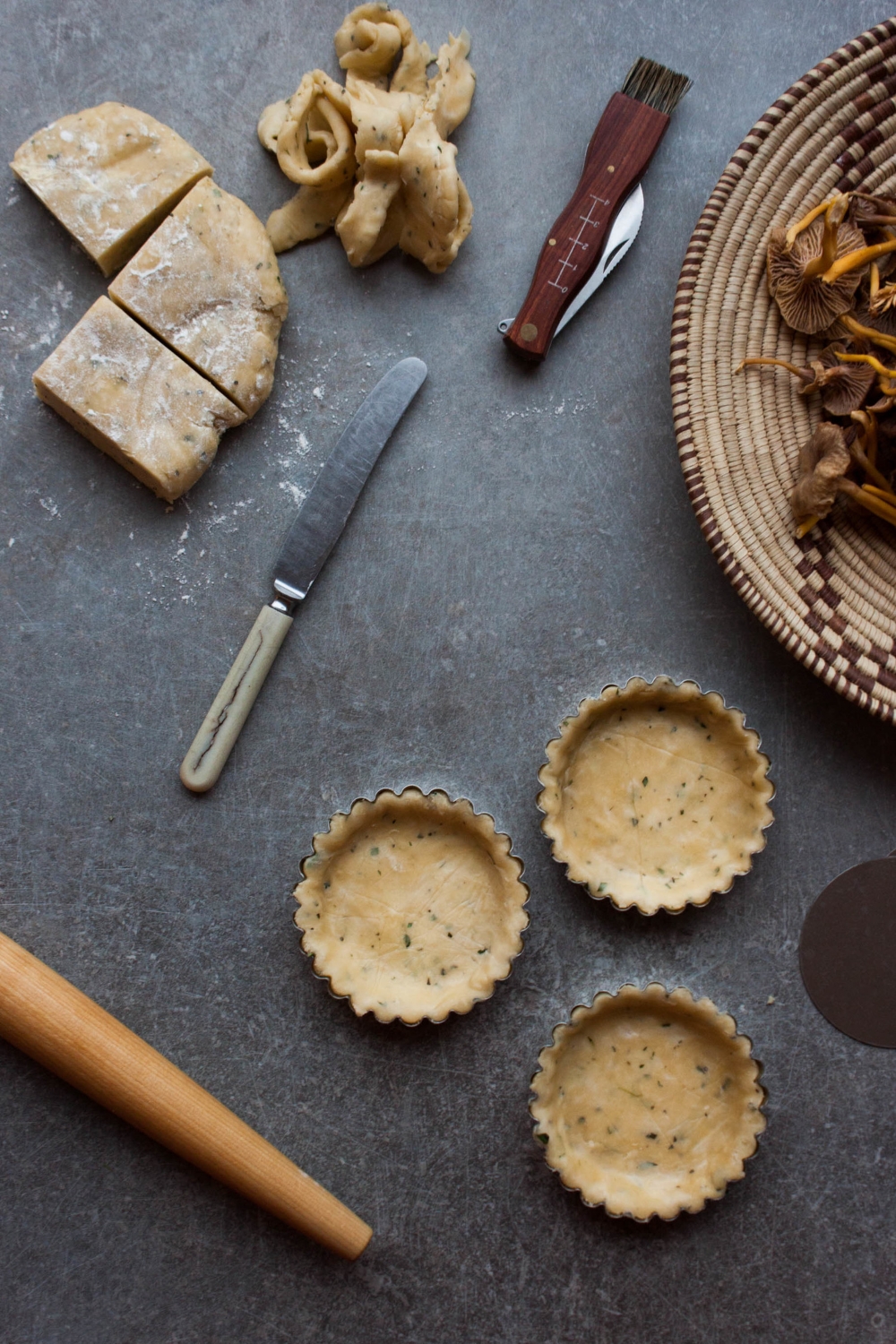
It's quite obvious that there's no way I could consume such an amount within a few days. Luckily, funnel chanterelles are perfect for dehydrating so that's what I've done with most of them. They'll keep well for years when fully dried and are wonderful in risottos and in soups. Actually, I prefer a mushroom risotto made with dried mushrooms as the mushroom aroma is more intense. That's also why I've decided to share a mushroom risotto recipe at another time.
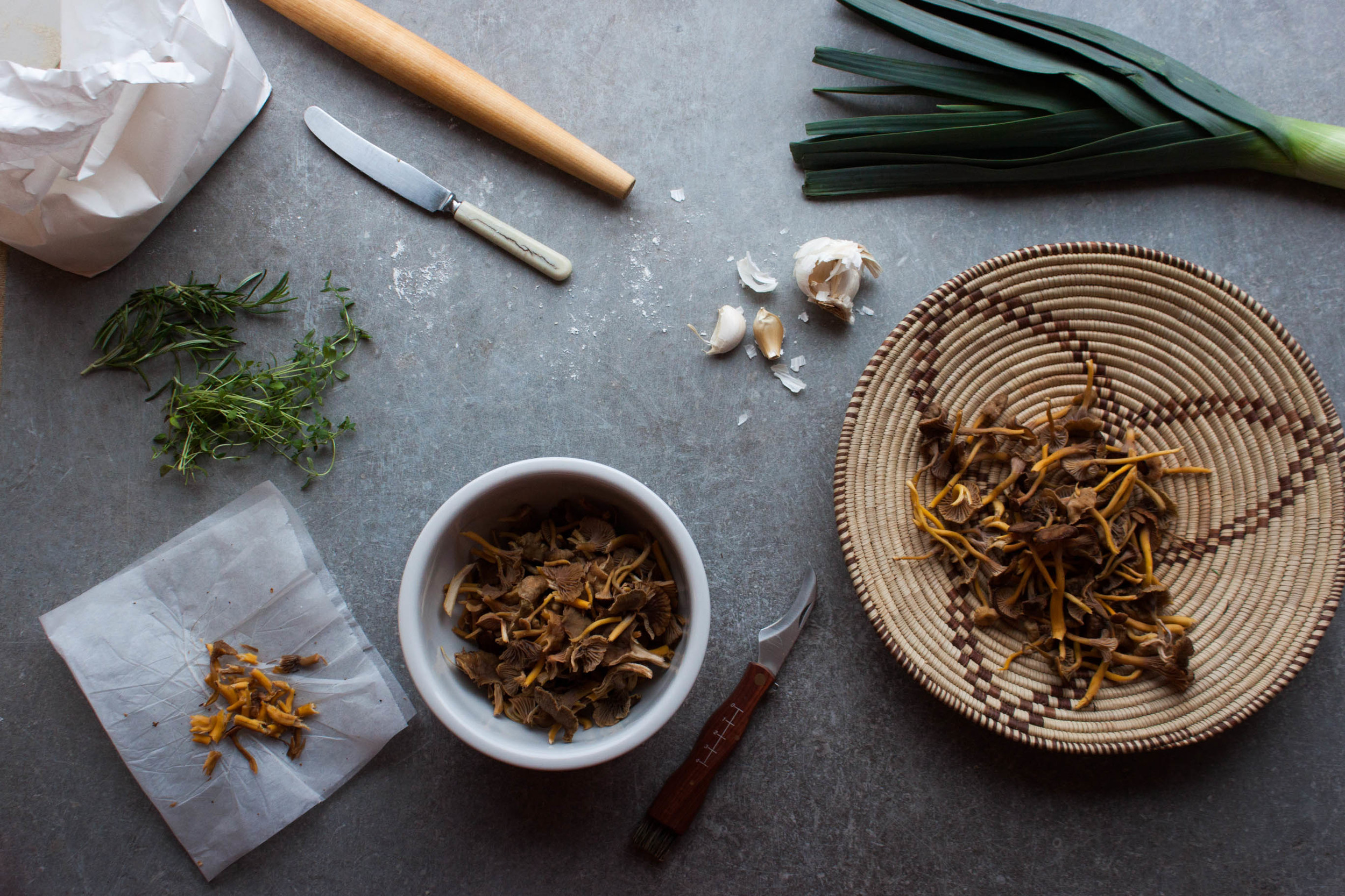
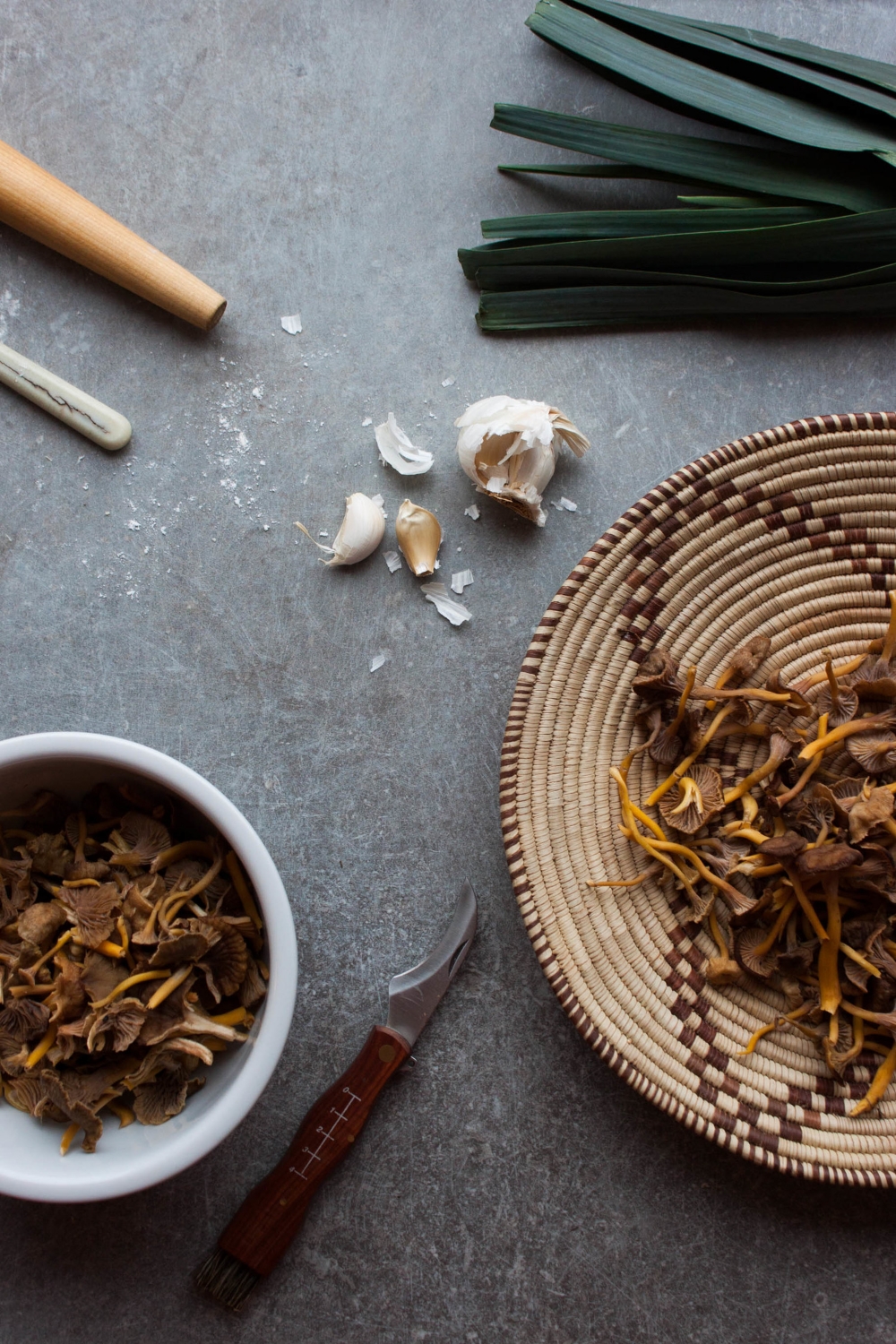
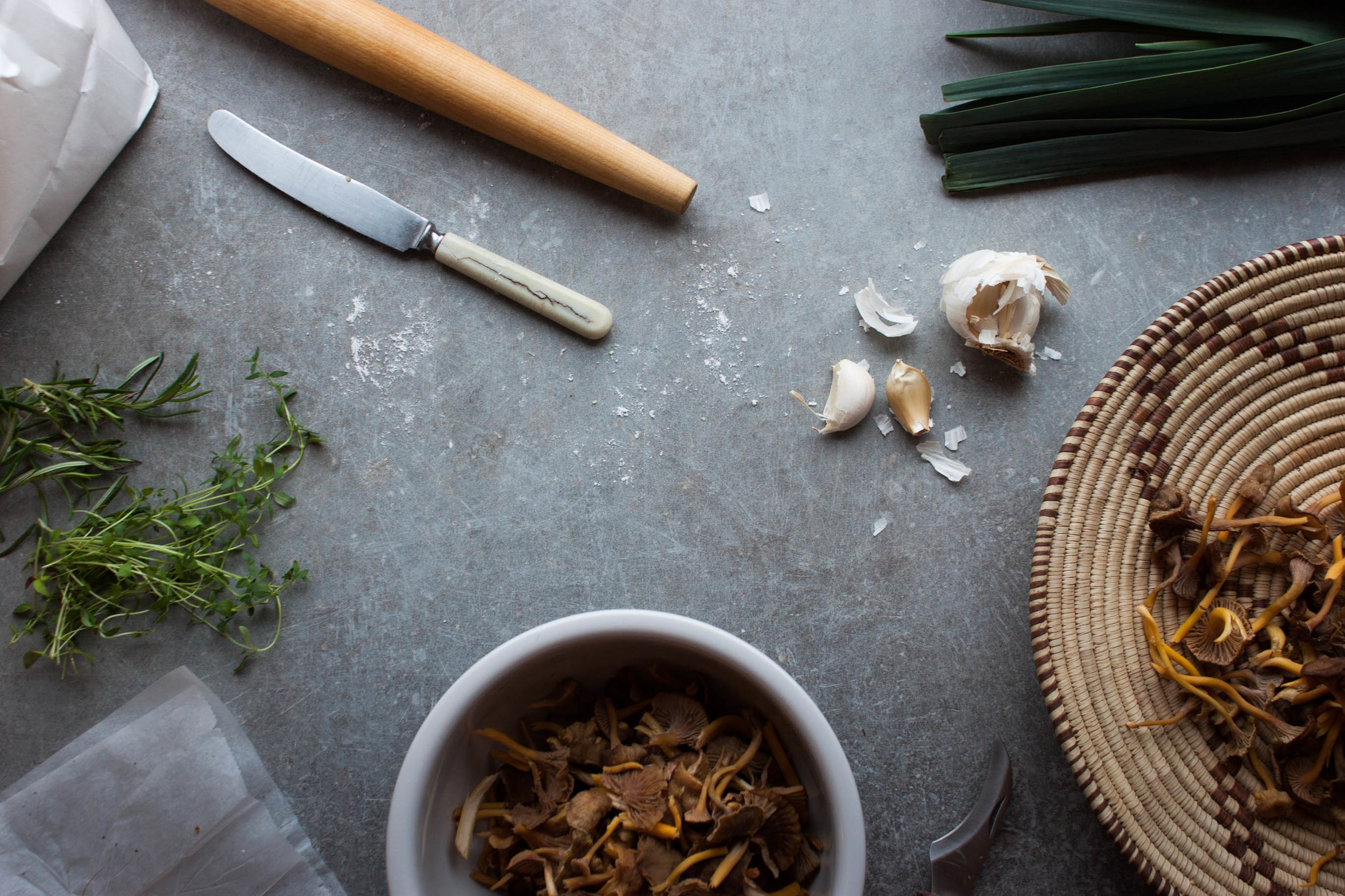
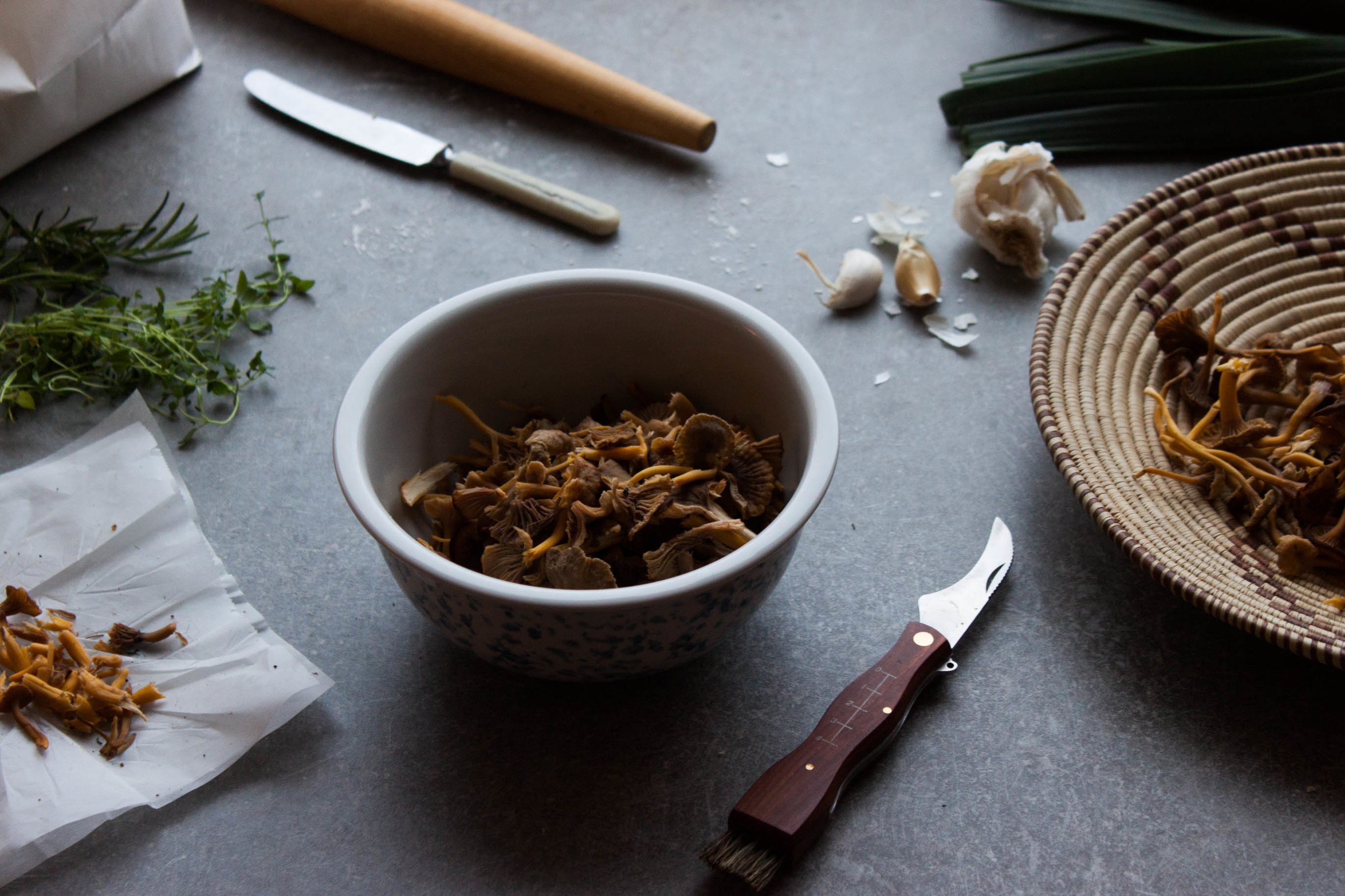
But of course I also use some of them fresh, such as in these lovely tartlets. I made them not only once but twice, both on Saturday and Sunday; they make a great lunch when served with a simple, fresh green salad. Truth to be told, I already tried to photograph these tartlets on Saturday without much success. I'm still trying to get used to these short days. I stood there, watched the sun beginning to set, my tartlets still in the oven...at 3pm! Yes, these are the downsides of living here in the north. On Sunday, I was better prepared, and caught the perfect light. It was a gray, rainy day, and the light was lovely and soft. Hope you like these pics as much as I do. It's like I got rewarded for all the frustration I experienced the day before.
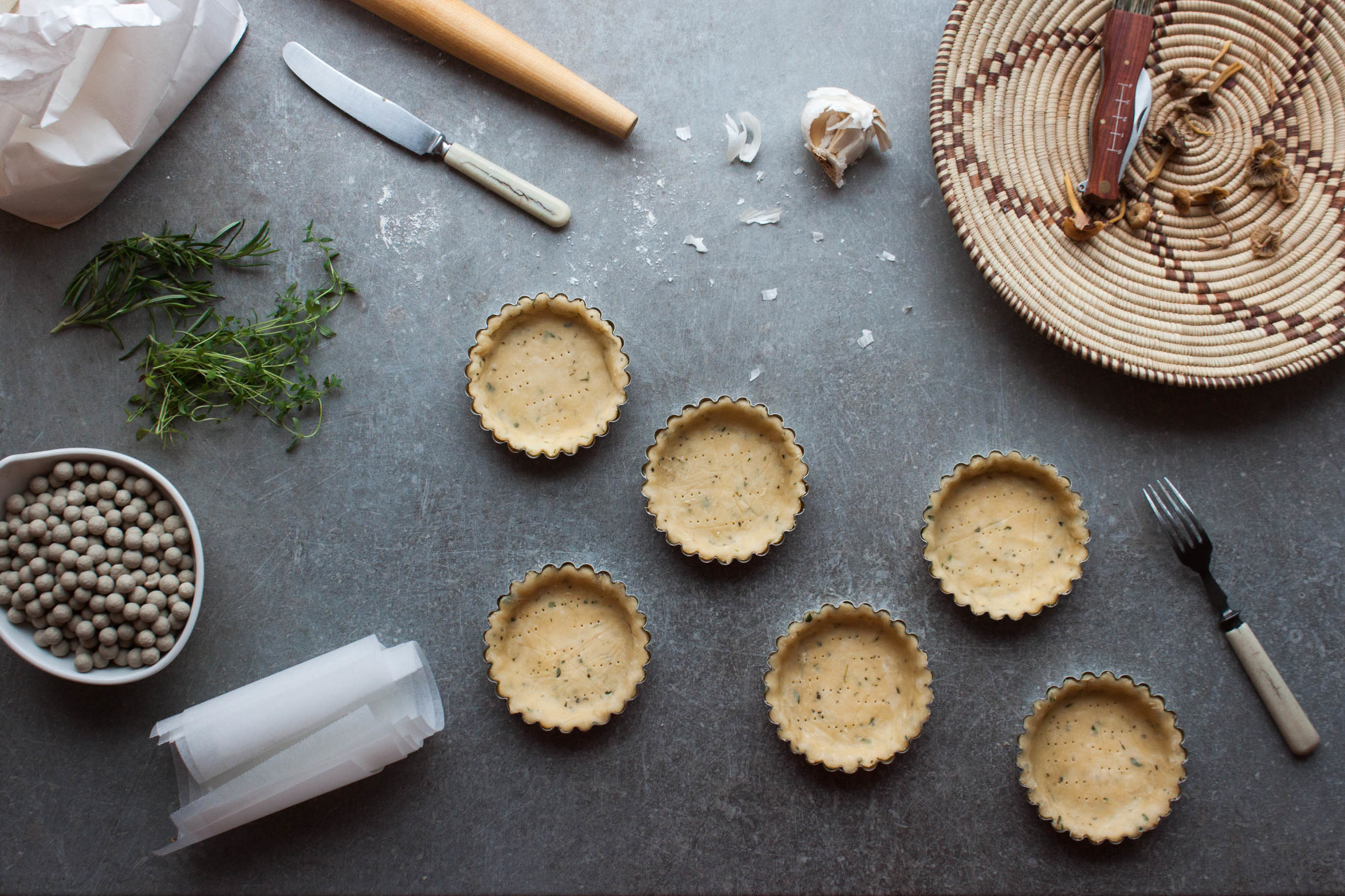
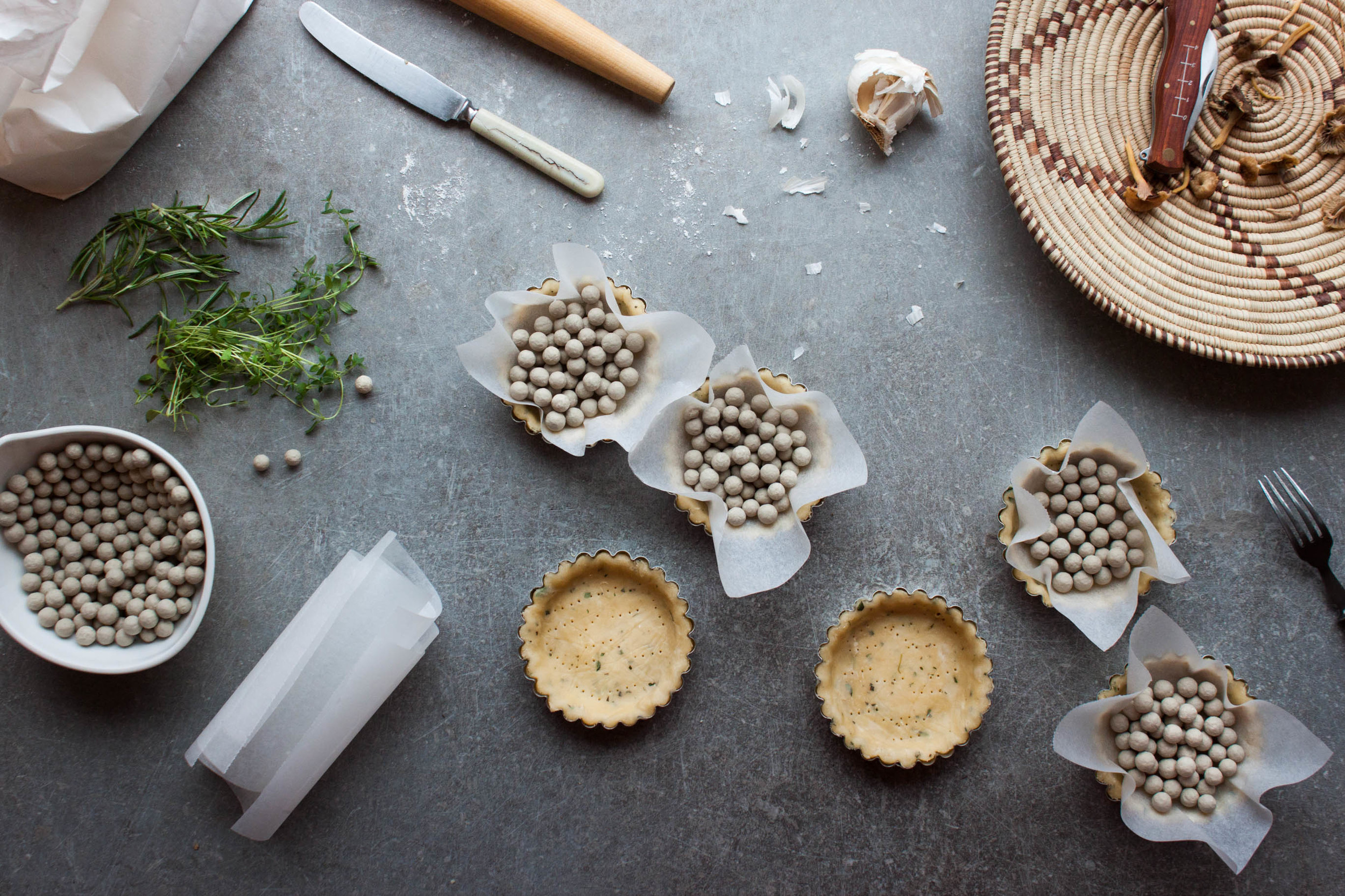
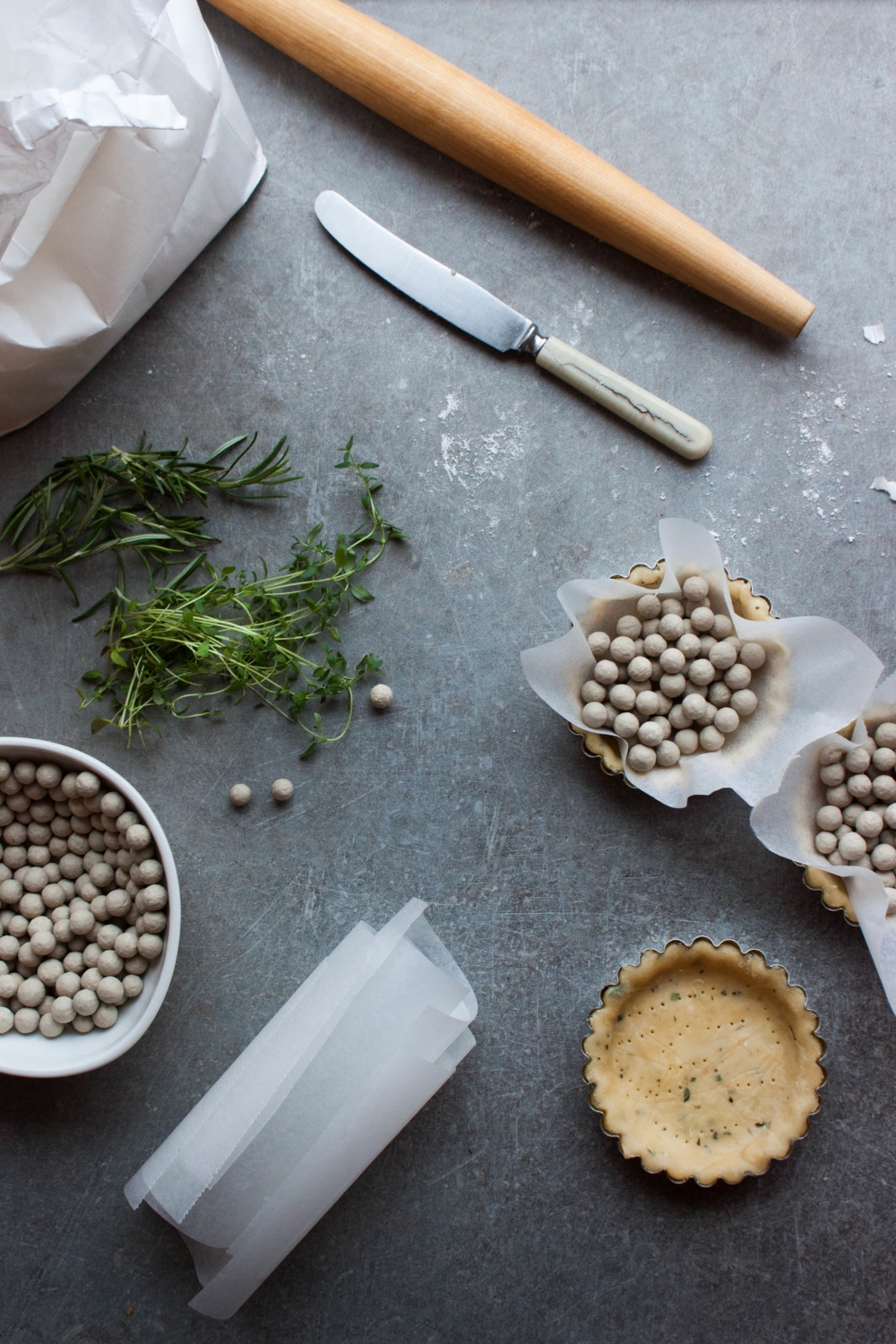
A few notes on blind baking:
- Blind baking is the process of pre-baking a crust without the filling. It prevents the crust from becoming soggy due to the (usually wet) filling. A recipe usually clearly states should a crust be blind baked. Don't skip this step! It's not as intimidating as it may sound but actually quite quick and easy to follow.
- Always use pie-weights, such as ceramic baking beans, when blind baking your pie or pastry to prevent it from losing its shape. If you don't have ceramic baking beans in your pantry, you can use dried lentils, peas, beans, or rice instead.
- Refrigerating the lined molds will keep the crust from shrinking during the blind baking. Therefore, lined molds should be refrigerated for at least half an hour before you blind bake them. [Give these pics a close look and you'll notice that I didn't have the patience to chill the crusts for long enough – the sides have shrunk a little.]
- Remember to prick the base of the crust with a fork before baking! It will prevent the crust from bubbling up and the slides to slouch.
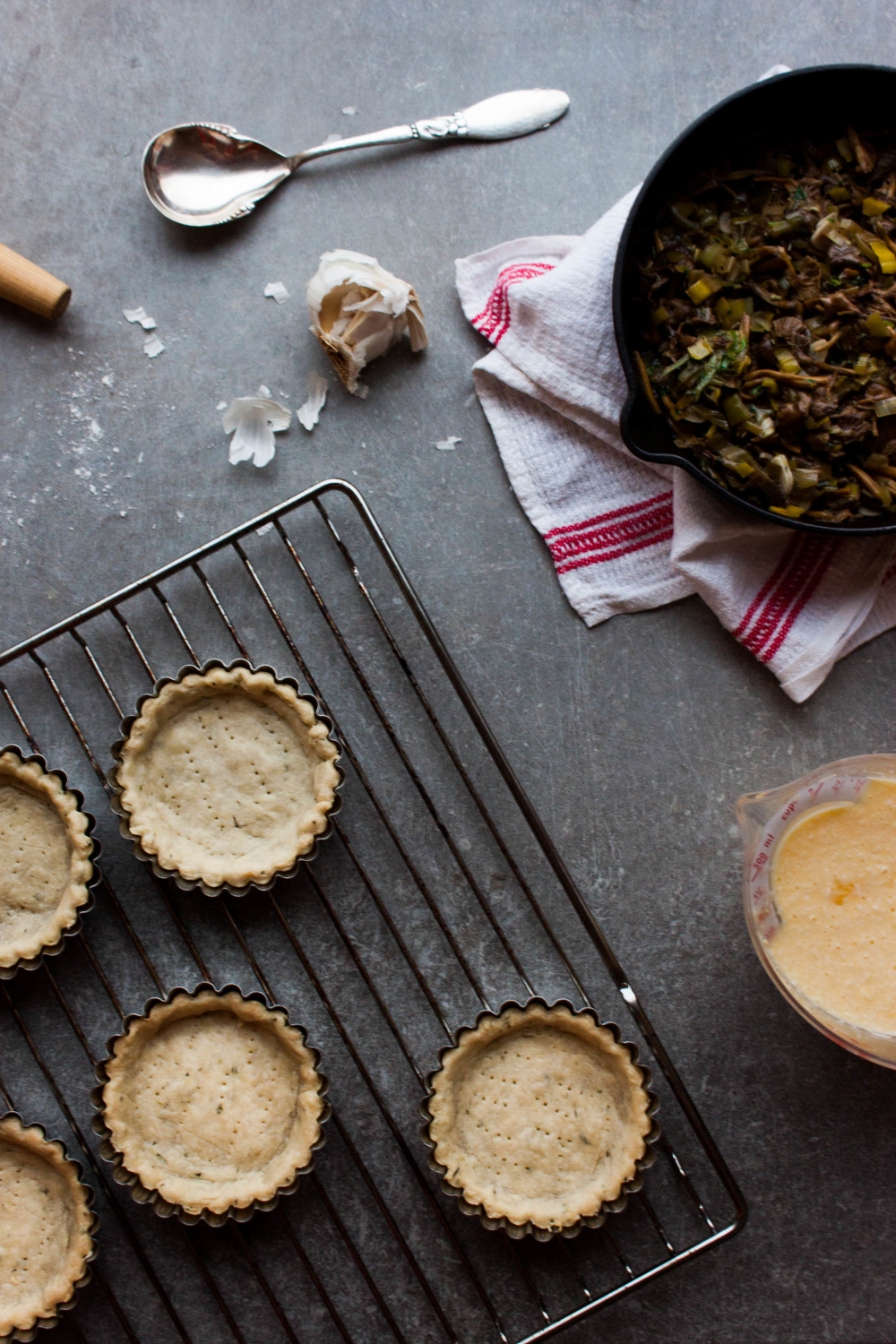
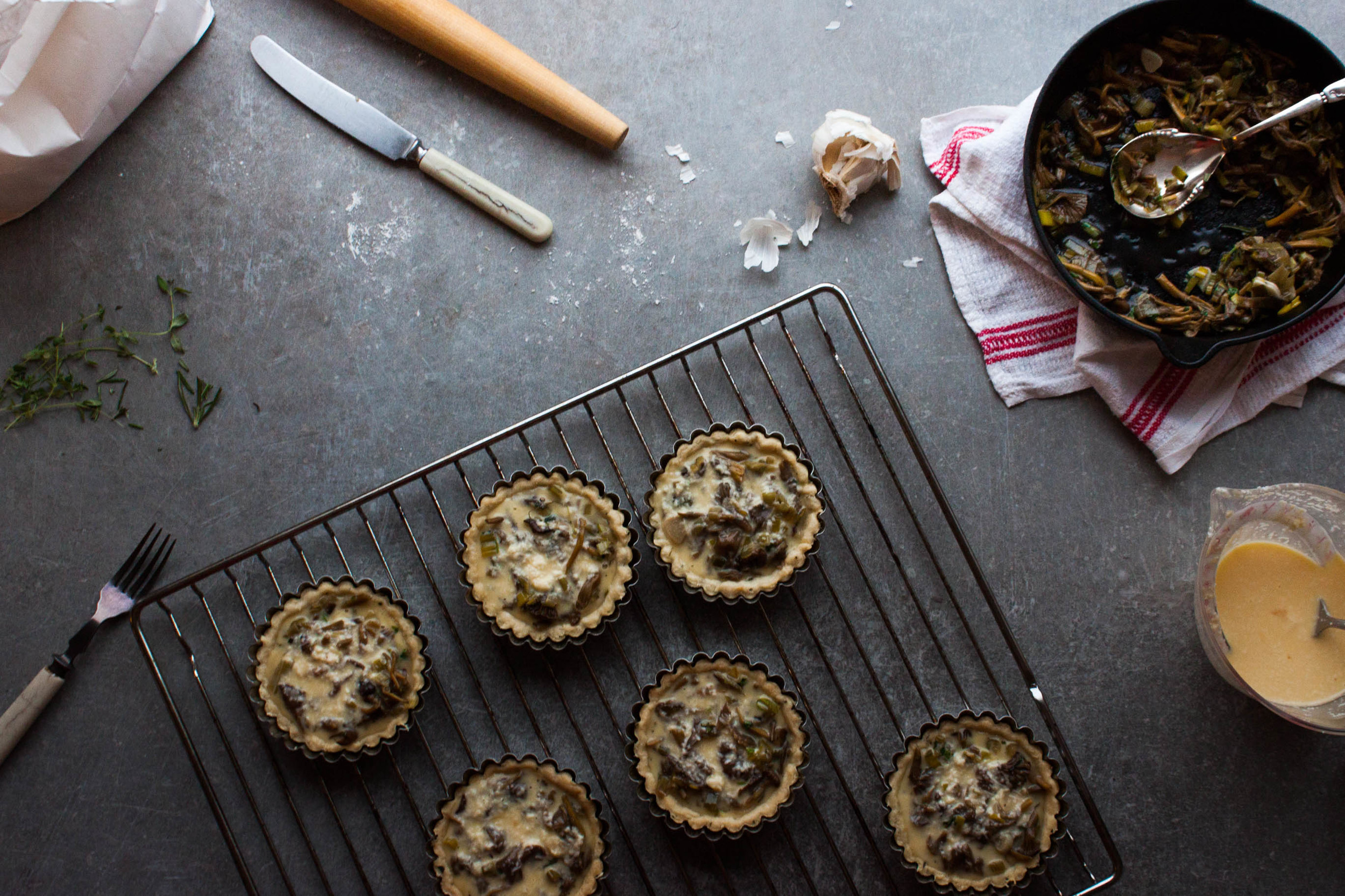
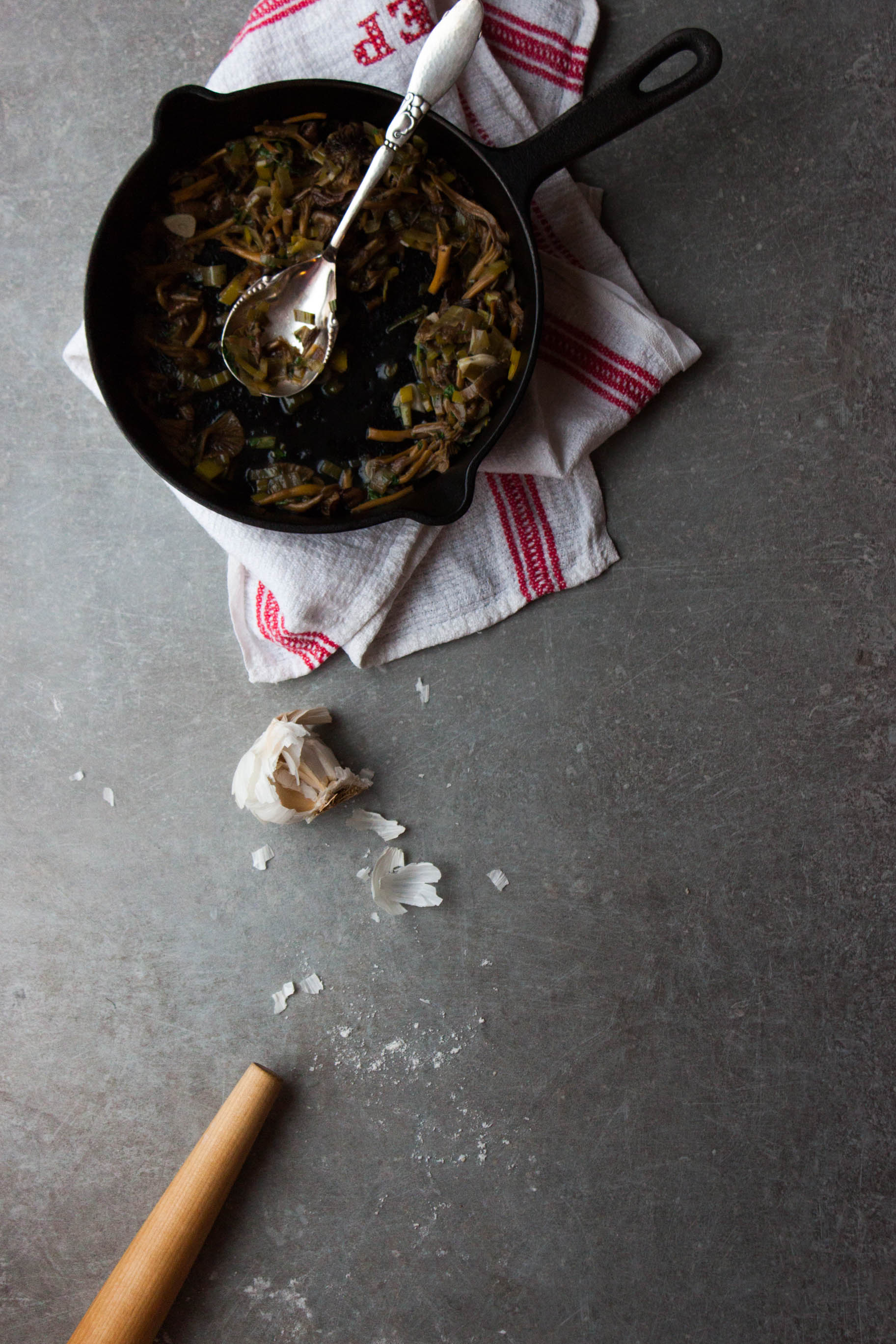
A few notes on storing & preparing mushrooms:
- Wild mushrooms should be cleaned directly in the woods as it's much more difficult to remove the dirt afterwards.
- Foraged mushrooms will keep well in the fridge for 2 to 7 days, depending on the variety. Don't cover the mushrooms and avoid storing them in plastic as they need to breath. I usually store them in the refrigerator's veggie compartment that I line with newspaper. If the mushrooms are really moist, I make sure to change the newspaper every few days. A paper bag would be perfect as well!
- Never ever wash your mushrooms! I see this all the time, but it's really the worst idea one can have. Mushrooms are like sponges, soaking up all the water. It's bad both for texture and taste. Don't spoil your gorgeous mushrooms!
- Instead, simply brush the mushrooms or wipe with a damp cloth. That's really all you need to do.
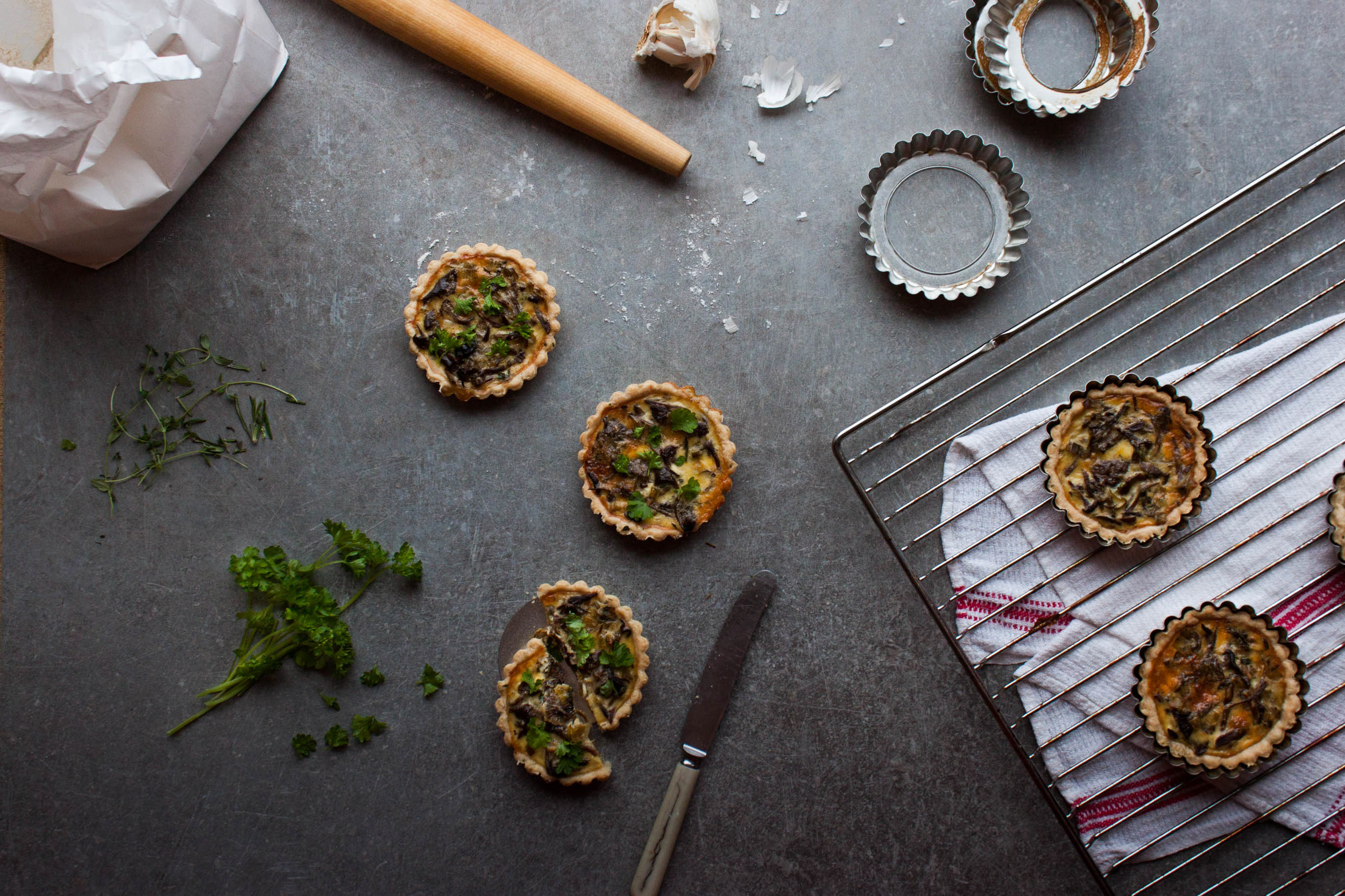
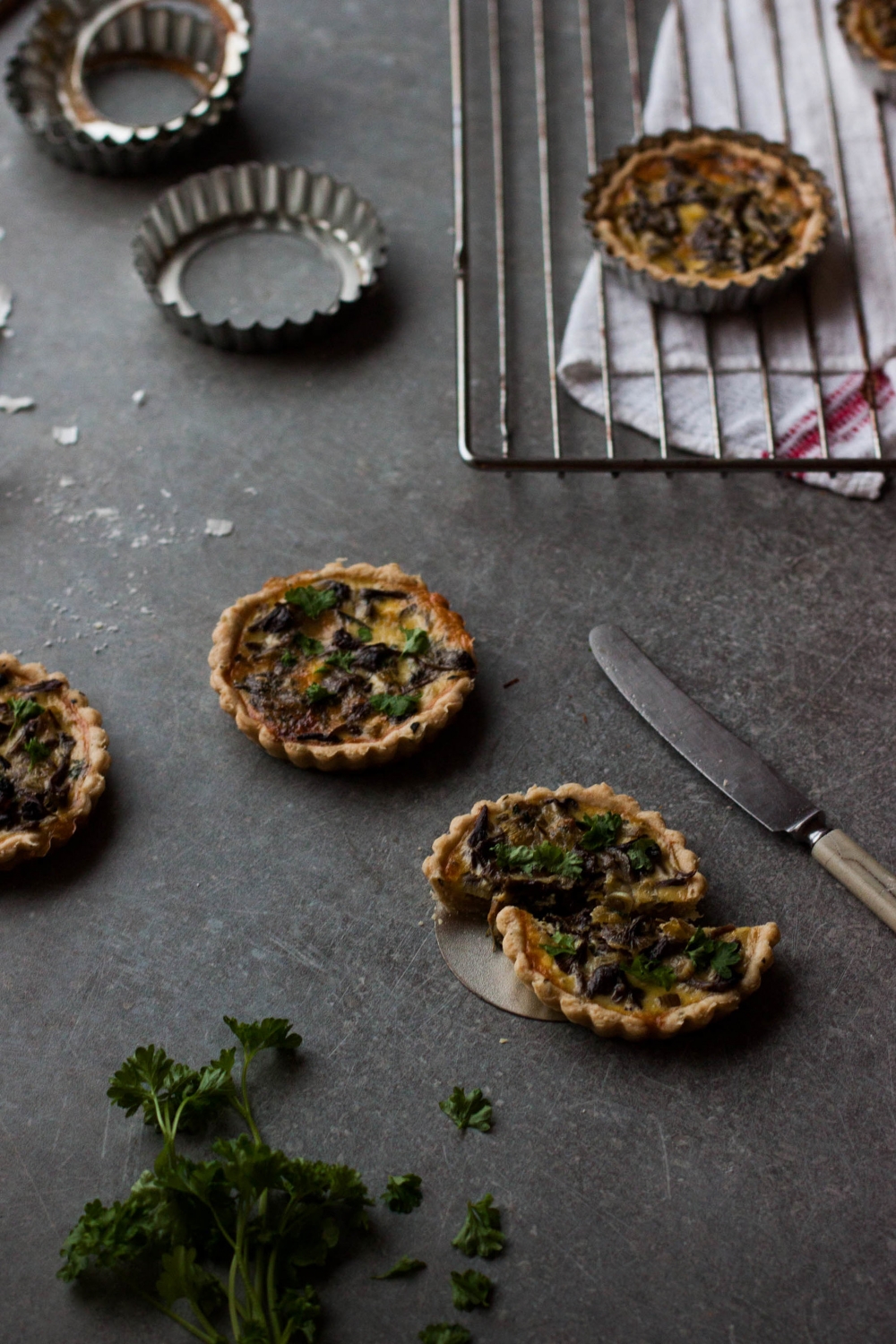
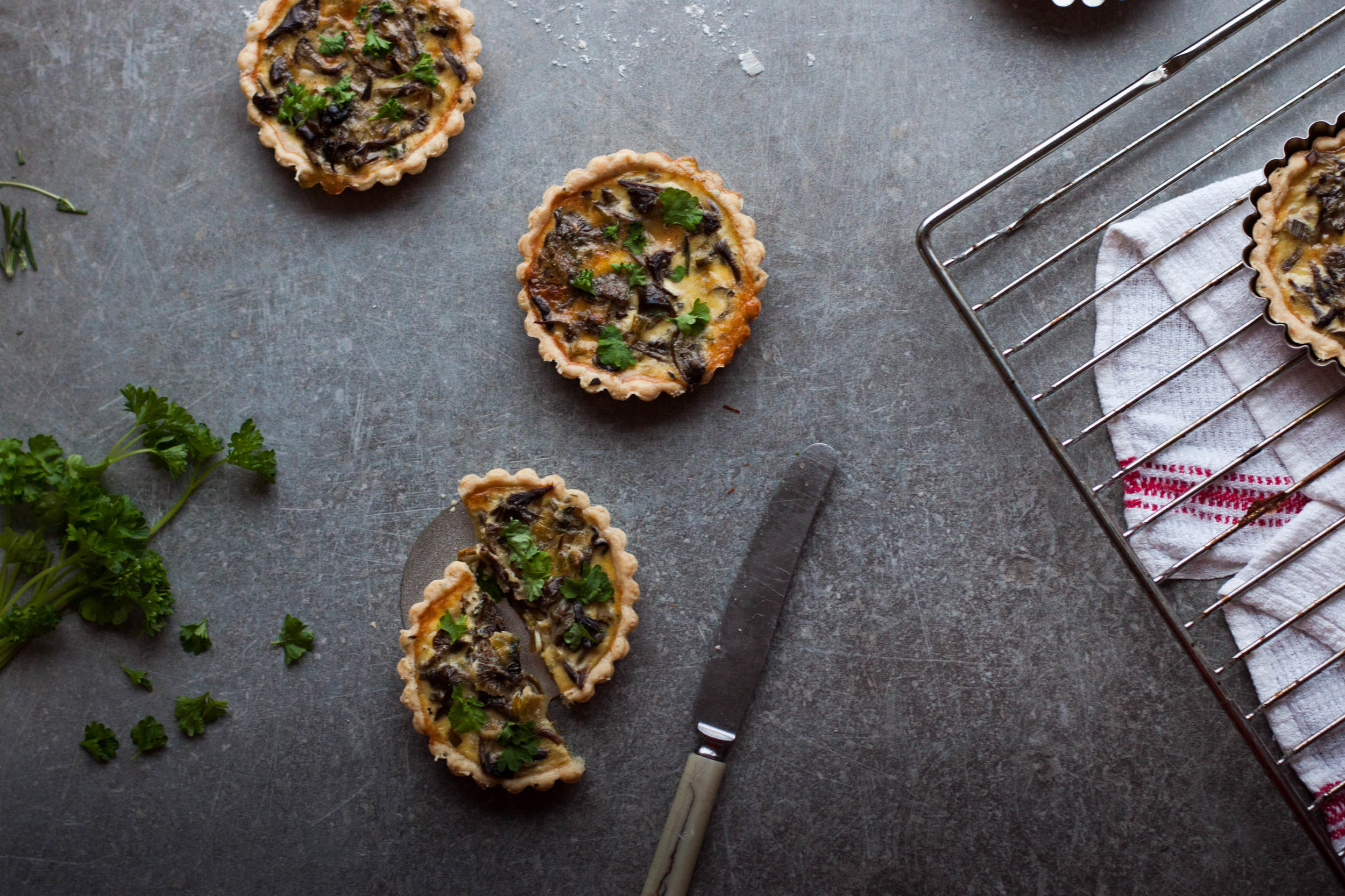
Funnel Chanterelle Tartlets with Herbed Crust
makes eight 10 cm (4") tarts OR one 22 cm (9") tart
for the crust
300 g (5 ½ dl; 2 ⅓ cups) all-purpose flour
155 g (1 stick) cold, unsalted butter, cut into cubes
1 ½ tsp finely chopped rosemary
1 ½ tsp thyme leaves
½ tsp fine sea salt
4 – 6 tbsp ice cold water
for the filling
2 tbsp olive oil
15 cm piece of leek (white and light green parts only), finely sliced (you should end up with about 3 dl / 1 ⅓ cups sliced leek)
2 garlic cloves, thinly sliced
225 g funnel chanterelles or other (preferably wild) mushrooms
1 ½ tsp finely chopped rosemary
1 ½ tsp thyme leaves
¾ tsp fine sea salt
freshly ground black pepper
60 ml (¼ cup) dry white wine
1 tbsp finely chopped parsley
150 ml (⅔ cup) single cream
3 eggs (M)
40 g grated Västerbotten cheese or other flavorful, firm cheese, such as Comté or Gruyère
To make the crust
In a medium-sized bowl, combine the flour, butter, herbs, and salt. With your fingers, quickly rub the butter into the dry ingredients until well incorporated and crumbly. The dough should now resemble coarse bread crumbs with plenty of pea-sized pieces of butter remaining. Add water gradually just until the dough holds together when pinched. Try to work as fast as possible to avoid over-working the dough. Alternatively, you can use a pastry cutting tool or a food processor to make the dough.
Form the dough into a disk and wrap in plastic. Refrigerate for half an hour or until ready to roll.
Grease the molds. Remove the dough from the refrigerator. Lightly dust a clean work surface with flour. Alternatively, you can roll out the dough between a piece of parchment paper. Roll out the dough into eight 3 mm (1/8") thick circles. Line the molds with the dough. Refrigerate for half an our.
Preheat the oven to 200°C (400°F).
Prick the crust bases with a fork. Place a piece of parchment paper into each mold and fill with ceramic baking beans (or alternative baking weights). Prebake for 15 minutes, remove the baking beans and parchment paper and bake for further 5–10 minutes, or until the crust is light brown in color. Reduce the temperature to 180°C (355°F).
To make the filling
While prebaking the crust, prepare the filling. In a medium-sized pan, heat the olive oil over medium heat. Add the leeks and cook for about 3 minutes, or until soft but not brown. Add the garlic, mushrooms, rosemary, thyme, salt, and pepper. Cook for 5 minutes, or until tender. Add the white wine and let cook for about 1 minute. Add the parsley. Set aside and let cool slightly.
In a medium-sized bowl, whisk together the single cream, eggs, and cheese until smooth. Set aside.
To arrange and bake the tartlets
Fill the prebaked tart shells with the mushroom filling. Pour the egg mixture over the filling making sure to spread it evenly. Bake the tartlets for 20–25 minutes, or until golden brown. Let the tartlets cool for around 10 minutes before serving. Enjoy!
Note: If you decide to make one 22 cm (9") tart, you need to adapt the recipe a little: Roll the dough to 4 mm (1/6") thickness. Blind bake the crust for 15 minutes, remove the baking beans, and bake for further 10–15 minutes, or until light brown. Bake the tart with the filling for 25–30 minutes, or until golden brown.
